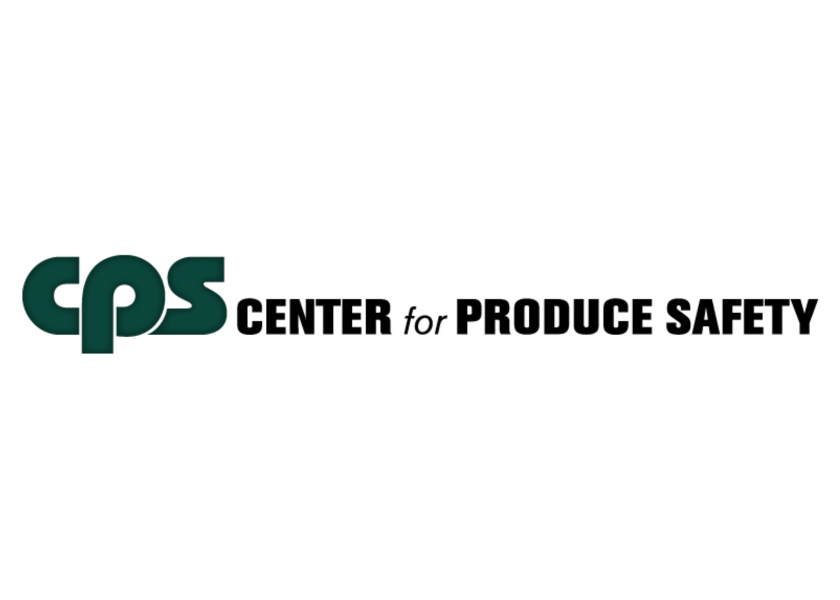Study looks at role of dust in potential cross-contamination

Researchers have conducted significant research into the role of water in foodborne outbreaks and to a lesser extent, soil’s contribution, but the potential for dust particles to transfer pathogens onto produce has been largely overlooked.
Through her project, “When the E. coli hits the fan! Evaluating the risks of dust-associated produce cross-contamination,” Kelly Bright, Ph.D., with the University of Arizona, hopes to gain a better understanding of the role of dust in pathogen transfer. Ultimately, she and her fellow researchers plan to develop best management practices (BMPs) to help growers better understand the risks and implement mitigation measures.
Bright will lead a combination of laboratory experiments and field studies in Arizona’s arid farming region, home to winter leafy greens production. Her work will involve conventionally and organically grown spinach and Romaine lettuce. Joining her as co-principal investigators at the University of Arizona are Walter Betancourt, Ph.D., and Charles Gerba, Ph.D.
At the University of Georgia, co-PIs Govindaraj Dev Kumar, Ph.D., and Laurel Dunn, Ph.D., will conduct the same laboratory and field studies, although under Georgia’s more humid conditions. Their work will involve bell peppers and tomatoes, two of the state’s predominant crops.
Conducting the research in two diverse production regions will broaden the usefulness of the results, Bright said.
“With our collaborators being in Georgia, it will provide an entirely different region with a completely different environment, so that’s useful,” she said. “We could do the work just in Arizona, but then the type of data would be limited to regions that are arid. With different types of crops, different environmental and atmospheric conditions, and different growing seasons, it makes the data more applicable for a wider variety of crops and regions.
KEY TAKEAWAYS
- Research delves into dust’s largely overlooked role in possible produce cross-contamination.
- Collaborators in Arizona and Georgia will conduct studies under different environmental conditions and growing seasons.
- Results should be applicable to a broader set of producers.
- Researchers plan to distill findings into grower best management practices.
“We want to partner our lab studies with the field studies to flesh out the data and have more relevant information to develop models.”
For the laboratory experiments, the researchers collected soil samples from their respective areas and shared them with their cross-country collaborators. They separated the soils based on textures and particle size: clay, loam and sandy. They also measured soil organic matter, soil moisture content and background flora.
The researchers then inoculated the soil particles with a known quantity of a pathogen. They are working with strains of Salmonella Newport and Typhimurium and E. coli O157:H7 to determine the survivability and transferability differences among the microorganisms. The original isolates were collected from cattle, chickens or lettuce. Dev Kumar has modified them to possess antibiotic resistance to improve their detection in environmental matrices such as dust.
To measure potential transfer, they apply pathogen-inoculated particles to plants using a “duster” to simulate wind-blown dust. The crops are then reared in biosafety level 2 growth chambers where the researchers can control relative humidity and other environmental conditions.
The researchers are evaluating the role of humidity, agricultural practice (organic versus conventional) and soil characteristics on pathogen recovery. They will also take the crop to harvest to measure bacterial persistence.
The field studies will involve collecting air samples at varying distances from beef and/or poultry production facilities over multiple days and under various weather conditions.
The researchers will assay the dust samples collected from air in the field for the presence of generic and pathogenic E. coli and Salmonella species. They also will look for the presence of biomarkers, such as fecal genetic markers, bile salts and metabolites, that could indicate fecal contamination.
A dust sample only provides a snapshot of what is occurring at that specific place in time, Bright said. But collecting multiple samples over a long period and under various conditions paints a more detailed picture.
The laboratory data, combined with the field sampling results, will allow the researchers to develop a QRMA – or quantitative microbial risk assessment -- model. Bright said they plan to distill the results down into more user friendly grower BMPs. Included will be possible mitigation measures and buffers between produce fields and livestock operations, to name a few.







